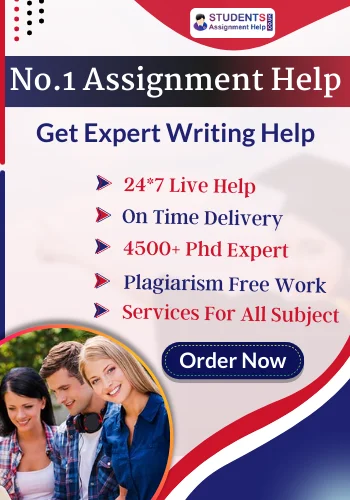- BIT4213 Fundamental of Cryptography Individual Assignment 1 – Understanding Cryptographic Techniques
- WNI077 Nutrition and Digestion Graded Assignment 2 Brief : Access to HE Diploma – Health and Social Care
- FDY3003 Exploring the Social World Assignment Essay – Arden University UK
- Mechanical Engineering Assessment: Design and Development of an Aerodynamics Package
- 7CO04 Business Research in People Practice Learner Assessment Brief
- Fundamentals of Chemistry Assignment Brief Workbook Task 1 and Task 2
- Managing Information System Assignment – A Case Study on Amazon
- Unit 5 Furniture and Accessories in Interior Design Assignment – National Design Academy
- 6ENT2030 Geotechnical Design Assignment Brief – University of Hertfordshire
- Network and Security Assignment Project Report for Global Enterprises
- Unit 5011 Industrial Power Electronics and Storage Pearson BTEC Level 5 Assignment Brief
- NU7020 Leadership and Quality Improvement and Governance Assignment – Trinity College Dublin (TCD)
- BTEC Level 3 Business Unit 4: Managing an Event – Assessment Brief
- NBS8641 Data Analytics for Business Insights Assessment Brief Semester 1 2025-26
- Biological Data Driven Coursework Questions 2025-26 – Pharmaceutical Sciences
- CETM71 Computer Architectures and Network Assessment 2 – University of Sunderland
- Level 5 Associate Diploma Unit 5CO01 Organisational performance and culture in practice Learner Assessment Brief
- Quantitative Methods for Accounting and Finance Assignment Reports
- MPM7002 Project Leadership Assessment Brief Semester 1 2025/2026
- E232 Exploring Childhood and Youth Tutor-Marked Assignment 01 | The Open University
5CO01 CIPD L5 Assignment Questions: Organisational Structure, Strategy, and People Practices
| Subject | 5CO01: Organizational Performance and Culture in Practice |
Task – Questions
To complete the task, you should provide a written response to each of the questions below, making appropriate use of academic theory and practical examples to expand your response and illustrate key points.
- Evaluate the advantages and disadvantages of both a divisional structure and a matrix structure. Within the evaluation, you should include the reasons underpinning each structure. (AC 1.1)
- Analyse the extent to which the organisational strategy in your organisation (or an organisation with which you are familiar) helps to ensure products or services meet customers’ needs. (AC 1.2)
- Analyse the current impact of interest rates, inflation and one other external factor on your organisation (or one with which you are familiar). Identify organisational priorities arising from your analysis. (AC 1.3)
- In February 2024, Peter Cheese, current CEO of CIPD stated, “AI is transforming jobs, careers and workplaces. People professionals have a key role to play in encouraging safe experimentation and rapid learning, so that we can reap the benefits and mitigate the risks.” Assess the extent that AI is, or could be, used in your organisation (or an organisation with which you are familiar) and assess how AI impacts work. (AC 1.4)
- Explain Charles Handy’s model of organisational culture and explain David Rock’s SCARF theory. (AC 2.1)
Do You Need Assignment of This Question
- Assess how employee selection or employee development impacts organisational culture and behaviour in your organisation (or one with which you are familiar). (AC 2.2)
- An organisation is planning a change relating to hybrid working. Many employees moved to home working during the Covid-19 pandemic. Whilst this approach worked well at the time, the organisation now wants all employees to work at least two days a week on site. Explain how Kotter’s approach to managing change could be used to successfully implement this change. (AC 2.3)
- Using the Kubler-Ross change curve, discuss how change is experienced. (AC 2.4)
- The CIPD’s Health and wellbeing at work survey 2023 found the percentage of organisations that have a standalone wellbeing strategy has risen from 40% in 2018 to 53% in 2023. Although the percentage has increased, this means that 47% of organisations do not have a standalone wellbeing strategy. Assess the importance of wellbeing at work and assess how good work could impact wellbeing. (AC 2.5)
- Provide a brief overview of the employee lifecycle and discuss people practice roles at the recruitment, development and separation stages of the lifecycle. (AC 3.1)
- Analyse how people practice supports organisational strategy through vertical integration and how people practice supports wider people strategies through horizontal integration. (AC 3.2)
- An organisation is planning to introduce a four-day working week. Discuss the processes the people function could use to consult and engage with managers and employees to understand their needs when moving from a five-day to four-day working week. (AC 3.3)
Your evidence must consist of:
- Written answers to the assessment questions (approximately 4550 words, refer to CIPD word count policy).
- IMPORTANT NOTE: At Associate Level Referencing is mandatory – you must provide a reference where you have drawn from a secondary source; Harvard referencing is preferable. Please use the Reference box provided to record all your long references. Short references should be included within the narrative. We advise you read the guidance on how to set out your references on the Learner Hub.
- Upload the completed Learner Assessment brief, with both tasks completed, through the Assignments option in the Oakwood Learner Hub.
Briefing Paper Questions
(AC1.1) Evaluate the advantages and disadvantages of different types of organisation structures, including the reasons underpinning them.
Short references should be added into your narrative below. Please remember to only list your long references in the reference box provided at the end of this section.
Word count: Approximately 500 words
(AC1.2) Analyse connections between organisational strategy, products, services and customers.
Short references should be added into your narrative below. Please remember to only list your long references in the reference box provided at the end of this section.
Word count: Approximately 400 words
(AC1.3) Analyse external factors and trends impacting organisations to identify current organisational priorities.
Short references should be added into your narrative below. Please remember to only list your long references in the reference box provided at the end of this section.
Word count: Approximately 450 words
Buy Answer of This Assessment & Raise Your Grades
(AC1.4) Assess the scale of technology within organisations and how it impacts work.
Short references should be added into your narrative below. Please remember to only list your long references in the reference box provided at the end of this section.
Word count: Approximately 350 words
(AC2.1) Explain theories and models which examine organisational culture and human behaviour.
Short references should be added into your narrative below. Please remember to only list your long references in the reference box provided at the end of this section.
Word count: Approximately 350 words
(AC2.2) Assess how people practices impact on organisational culture and behaviour.
Short references should be added into your narrative below. Please remember to only list your long references in the reference box provided at the end of this section.
Word count: Approximately 350 words
(AC2.3) Explain different approaches to managing change.
Short references should be added into your narrative below. Please remember to only list your long references in the reference box provided at the end of this section.
Word count: Approximately 400 words
(AC2.4) Discuss models to show how change is experienced.
Short references should be added into your narrative below. Please remember to only list your long references in the reference box provided at the end of this section.
Word count: Approximately 300 words
(AC2.5) Assess the importance of wellbeing at work and the different factors which impact wellbeing.
Short references should be added into your narrative below. Please remember to only list your long references in the reference box provided at the end of this section.
Word count: Approximately 400 words
(AC3.1) Discuss the links between the employee lifecycle and different people practice roles.
Short references should be added into your narrative below. Please remember to only list your long references in the reference box provided at the end of this section.
Word count: Approximately 350 words
(AC3.2) Analyse how people practice connects with other areas of an organisation and supports wider people and organisational strategies.
Short references should be added into your narrative below. Please remember to only list your long references in the reference box provided at the end of this section.
Word count: Approximately 350 words
(AC3.3) Discuss processes for consulting and engaging with internal customers to understand their needs.
Short references should be added into your narrative below. Please remember to only list your long references in the reference box provided at the end of this section.
Word count: Approximately 350 words.
Are You Looking for Answer of This Assignment or Essay
Marking Descriptors
| Mark | Range | Descriptor |
|---|---|---|
| 1 | Fail | The response DOES NOT demonstrate sufficient knowledge, understanding or skill (as appropriate) to meet the AC. Insufficient examples included where required to support answer. Insufficient or no evidence of the use of wider reading to help inform answer. Presentation or structure of response is not appropriate and does not meet the requirement of the question/assessment brief. |
| 2 | Low Pass | The response demonstrates an acceptable level of knowledge, understanding or skill (as appropriate) to meet the AC. Sufficient acceptable examples included where required to support answer. Sufficient evidence of appropriate wider reading to help inform answer. Satisfactory in-text referencing. Answer is acceptable but could be clearer in responding to the question/task and presented in a more coherent way. Required format adopted but some improvement required to the structure and presentation of the response. |
| 3 | Pass | The response demonstrates a good level of knowledge, understanding or skill (as appropriate) to meet the AC. Includes confident use of examples, where required to support the answer. Good evidence of appropriate wider reading to help inform answer. A good standard of in-text referencing. Answer responds clearly to the question/task and is well expressed. Presentation and structure of response is appropriate for the question/task. |
| 4 | High Pass | The response demonstrates a wide and confident level of knowledge, understanding or skill (as appropriate) to meet the AC. Includes strong examples that illustrate the points being made and support the answer. Considerable evidence of appropriate wider reading to inform answer. An excellent standard of in-text referencing. Answer responds clearly to the question/task and is particularly well expressed or argued. Presentation and structure of response is clear, coherent, and responds directly to the requirements of the question/task. |




